The Somerset And Cornwall Light Infantry on:
[Wikipedia]
[Google]
[Amazon]
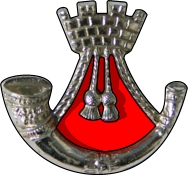
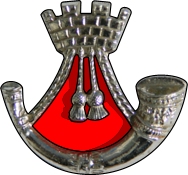 The Somerset and Cornwall Light Infantry (SCLI) was a
The Somerset and Cornwall Light Infantry (SCLI) was a
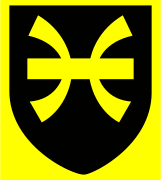 The first posting of the newly formed regiment was to Osnabrück in Western Germany as part of the
The first posting of the newly formed regiment was to Osnabrück in Western Germany as part of the  The next posting was to Gibraltar where the battalion undertook ceremonial duties including the
The next posting was to Gibraltar where the battalion undertook ceremonial duties including the 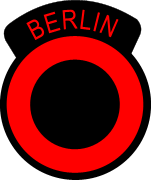
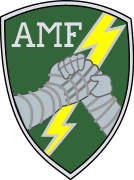 The next posting took the regiment to Berlin between 1963 and 1965. During this period, Lt. Col. John Howard was in charge, followed by Lt. Col. G. Mathews. In November 1965 the regiment returned to Britain and was stationed at the Gravesend Barracks. During this period, the battalion was part of the brigade force that was on permanent standby to be flown anywhere in the world at 72 hours' notice.
The next posting took the regiment to Berlin between 1963 and 1965. During this period, Lt. Col. John Howard was in charge, followed by Lt. Col. G. Mathews. In November 1965 the regiment returned to Britain and was stationed at the Gravesend Barracks. During this period, the battalion was part of the brigade force that was on permanent standby to be flown anywhere in the world at 72 hours' notice.
 In April 1966 the regiment was posted to
In April 1966 the regiment was posted to
 *Mons – Marne, 1914, 18 – Aisne, 1914 – Ypres, 1915, 17, 18 – Somme, 1916, 18 – Albert, 1916, 18 – Arras, 1917, 18 – Passchendale –
*Mons – Marne, 1914, 18 – Aisne, 1914 – Ypres, 1915, 17, 18 – Somme, 1916, 18 – Albert, 1916, 18 – Arras, 1917, 18 – Passchendale –  *A Bugle Horn stringed ensigned with a Mural Crown all in Silver. The Sphinx superscribed "Egypt". A Mural Crown superscribed "Jellalabad" Gibraltar, 1704–5 – Dettingen – St. Lucia, 1778 – Dominica – Rolica – Vimiera – Corunna – Martinique, 1809 – Salamanca – Pyrenees – Nivelle – Nive Orthes – Peninsula – Waterloo – Ava – Ghuznee, 1839 – Afghanistan, 1839 – Cabool, 1842 – Mooltan – Goojerat – Punjab – Sevastopol – Lucknow – South Africa – 1878-9 – Tel-el-Kebir – Egypt, 1882 – Nile, 1884–85 – Burma, 1885-87 – Paardeberg – Relief of Ladysmith – South Africa 1899–1902 – Afghanistan, 1919.
*A Bugle Horn stringed ensigned with a Mural Crown all in Silver. The Sphinx superscribed "Egypt". A Mural Crown superscribed "Jellalabad" Gibraltar, 1704–5 – Dettingen – St. Lucia, 1778 – Dominica – Rolica – Vimiera – Corunna – Martinique, 1809 – Salamanca – Pyrenees – Nivelle – Nive Orthes – Peninsula – Waterloo – Ava – Ghuznee, 1839 – Afghanistan, 1839 – Cabool, 1842 – Mooltan – Goojerat – Punjab – Sevastopol – Lucknow – South Africa – 1878-9 – Tel-el-Kebir – Egypt, 1882 – Nile, 1884–85 – Burma, 1885-87 – Paardeberg – Relief of Ladysmith – South Africa 1899–1902 – Afghanistan, 1919.
 Colonels of the Regiment were:
*1959–1960: F.M. The Rt Hon (Allan Francis) John Harding, 1st Baron Harding of Petherton, GCB, CBE, DSO, MC, KStJ ''(ex
Colonels of the Regiment were:
*1959–1960: F.M. The Rt Hon (Allan Francis) John Harding, 1st Baron Harding of Petherton, GCB, CBE, DSO, MC, KStJ ''(ex

 The Somerset and Cornwall Light Infantry (SCLI) was a
The Somerset and Cornwall Light Infantry (SCLI) was a light infantry
Light infantry refers to certain types of lightly equipped infantry throughout history. They have a more mobile or fluid function than other types of infantry, such as heavy infantry or line infantry. Historically, light infantry often fought ...
regiment of the British Army. It was formed in October 1959 by the merger of the Somerset Light Infantry and the Duke of Cornwall's Light Infantry, and was itself merged with three other regiments of the Light Infantry Brigade
The Light Infantry Brigade was an administrative formation of the British Army from 1948 to 1968. The Brigade administered the regular English light infantry regiments.
After the Second World War the British Army had fourteen infantry depots, eac ...
in 1968 to form The Light Infantry.
History
The regiment was formed in 1959 by the merger of two regiments: the Somerset Light Infantry and the Duke of Cornwall's Light Infantry. Immediately before amalgamation the 1st Battalions of these regiments were stationed at Warminster and Osnabrück, respectively. The 1st Battalion The Somerset and Cornwall Light Infantry served at Osnabrück until June 1961 as part of the BAOR, when it moved toGibraltar
)
, anthem = " God Save the King"
, song = " Gibraltar Anthem"
, image_map = Gibraltar location in Europe.svg
, map_alt = Location of Gibraltar in Europe
, map_caption = United Kingdom shown in pale green
, mapsize =
, image_map2 = Gib ...
. Gibraltar Day is now celebrated annually on 6 October as the Regimental Day of Somerset and Cornwall Light Infantry.
The regiment brought colours and insignia from its parent regiments: the Royal Blue Facings and Royal Bugle Cords of the Somerset Light Infantry, the red patch commemorating the red feathers of the Light Company of the 46th Foot (later the 2nd Battalion the Duke of Cornwall's Light Infantry) and the privilege of wearing the sash knotted on the right side, a unique distinction usually associated with the gallantry of the 13th Foot at Culloden. The green head-dress, whistle cord and No 1 Dress Uniform are common to all Light Infantry Regiments. The parent Regiments were raised: in 1685 as Huntingdon's Foot, in 1702, as Fox's Marines, and in 1740 as the 57th (later renumbered 46th) (1st and 2nd Battalions The Duke of Cornwall's Light Infantry).
In 1968 it was amalgamated with the three other regiments of the Light Infantry Brigade
The Light Infantry Brigade was an administrative formation of the British Army from 1948 to 1968. The Brigade administered the regular English light infantry regiments.
After the Second World War the British Army had fourteen infantry depots, eac ...
to form The Light Infantry. Nicknames for the regiment included Pierce's Dragoons, The Bleeders, The Illustrious Garrison and The Yellow-banded Robbers.
Postings
 The first posting of the newly formed regiment was to Osnabrück in Western Germany as part of the
The first posting of the newly formed regiment was to Osnabrück in Western Germany as part of the 12th Armoured Infantry Brigade
The 12th Armoured Brigade Combat team, formerly the 12th Armoured Infantry Brigade, is a regular brigade of the British Army which has been in almost continuous existence since 1899 and now forms part of 3rd Division (United Kingdom), 3rd (United ...
. The first commanding officer of the regiment was Lt. Col. W.R. Lawson MBE, from October 1959 to April 1960. He was followed by Lt. Col. W. Hine-Haycock, who was in charge from April 1960 to September 1962. When this tour of duty ended, the battalion was moved to Seaton Barracks at Plymouth.
 The next posting was to Gibraltar where the battalion undertook ceremonial duties including the
The next posting was to Gibraltar where the battalion undertook ceremonial duties including the Ceremony of the Keys Ceremony of the Keys may refer to:
*Ceremony of the Keys (Edinburgh)
The Ceremony of the Keys is held in Holyrood Palace, Edinburgh, at the start of the British monarch's week-long residence there in July. Soon after the monarch's arrival, in t ...
, mounting guard at the Governor's residence and at the Border crossing with Spain, which included a perimeter patrol. While at Gibraltar, the battalion provided a company strength contingent to garrison RAF El Adem at Tobruk.

 The next posting took the regiment to Berlin between 1963 and 1965. During this period, Lt. Col. John Howard was in charge, followed by Lt. Col. G. Mathews. In November 1965 the regiment returned to Britain and was stationed at the Gravesend Barracks. During this period, the battalion was part of the brigade force that was on permanent standby to be flown anywhere in the world at 72 hours' notice.
The next posting took the regiment to Berlin between 1963 and 1965. During this period, Lt. Col. John Howard was in charge, followed by Lt. Col. G. Mathews. In November 1965 the regiment returned to Britain and was stationed at the Gravesend Barracks. During this period, the battalion was part of the brigade force that was on permanent standby to be flown anywhere in the world at 72 hours' notice.
 In April 1966 the regiment was posted to
In April 1966 the regiment was posted to Aden
Aden ( ar, عدن ' Yemeni: ) is a city, and since 2015, the temporary capital of Yemen, near the eastern approach to the Red Sea (the Gulf of Aden), some east of the strait Bab-el-Mandeb. Its population is approximately 800,000 people. ...
, a British protectorate, where extremists calling themselves the Aden National Liberation Front, battled for the independence of Aden by forcing the British out. During this posting, two servicemen were lost, one when his vehicle was blown up and the other when he was hit in the head by a piece of shrapnel from an exploding grenade
A grenade is an explosive weapon typically thrown by hand (also called hand grenade), but can also refer to a shell (explosive projectile) shot from the muzzle of a rifle (as a rifle grenade) or a grenade launcher. A modern hand grenade genera ...
.
Battle honours
;The Queens Colour *Mons – Marne, 1914, 18 – Aisne, 1914 – Ypres, 1915, 17, 18 – Somme, 1916, 18 – Albert, 1916, 18 – Arras, 1917, 18 – Passchendale –
*Mons – Marne, 1914, 18 – Aisne, 1914 – Ypres, 1915, 17, 18 – Somme, 1916, 18 – Albert, 1916, 18 – Arras, 1917, 18 – Passchendale – Cambrai
Cambrai (, ; pcd, Kimbré; nl, Kamerijk), formerly Cambray and historically in English Camerick or Camericke, is a city in the Nord (French department), Nord Departments of France, department and in the Hauts-de-France Regions of France, regio ...
, 1917, 18 – Hindenburg Line – Sambre – Doiran, 1917, 18 – Gaza – Palestine, 1917 – 18 – Tigris, 1916.
* Hill 112 – Mont Pincon – Nederrijn – Geilenkirchen – Rhineland – Rhine – North West Europe, 1940, 44–45 Gazala – Medjez Plain – Cassino II – Incontro – Cosina Canal Crossing – Italy, 1944–45 – North Arakan – Ngakyedauk Pass
;The Regimental Colour
 *A Bugle Horn stringed ensigned with a Mural Crown all in Silver. The Sphinx superscribed "Egypt". A Mural Crown superscribed "Jellalabad" Gibraltar, 1704–5 – Dettingen – St. Lucia, 1778 – Dominica – Rolica – Vimiera – Corunna – Martinique, 1809 – Salamanca – Pyrenees – Nivelle – Nive Orthes – Peninsula – Waterloo – Ava – Ghuznee, 1839 – Afghanistan, 1839 – Cabool, 1842 – Mooltan – Goojerat – Punjab – Sevastopol – Lucknow – South Africa – 1878-9 – Tel-el-Kebir – Egypt, 1882 – Nile, 1884–85 – Burma, 1885-87 – Paardeberg – Relief of Ladysmith – South Africa 1899–1902 – Afghanistan, 1919.
*A Bugle Horn stringed ensigned with a Mural Crown all in Silver. The Sphinx superscribed "Egypt". A Mural Crown superscribed "Jellalabad" Gibraltar, 1704–5 – Dettingen – St. Lucia, 1778 – Dominica – Rolica – Vimiera – Corunna – Martinique, 1809 – Salamanca – Pyrenees – Nivelle – Nive Orthes – Peninsula – Waterloo – Ava – Ghuznee, 1839 – Afghanistan, 1839 – Cabool, 1842 – Mooltan – Goojerat – Punjab – Sevastopol – Lucknow – South Africa – 1878-9 – Tel-el-Kebir – Egypt, 1882 – Nile, 1884–85 – Burma, 1885-87 – Paardeberg – Relief of Ladysmith – South Africa 1899–1902 – Afghanistan, 1919.
Civic honours
* County Borough of Taunton – 29 June 1961 * City of Truro – 10 July 1961 * County Borough of Bodmin – 7 July 1961 * City of Bath – 13 July 1961 * City of Wells – 12 July 1961Notable members
Recipients of theBritish Empire Medal
The British Empire Medal (BEM; formerly British Empire Medal for Meritorious Service) is a British and Commonwealth award for meritorious civil or military service worthy of recognition by the Crown. The current honour was created in 1922 to ...
for Gallentry
One soldier of the SCLI was awarded the BEM:
Colour Sergeant Robert "Bobby" Bogan
Regimental chapels
Church of St. Mary Magdalene, Taunton, Somerset The South Aisle contains a Book of Remembrance in an oak desk of those who fell in the 1939–45 War, and memorials to those who fell in the 1914–18 War, The Boer War, Chitral, The Crimea, The Afghan Campaign, Maharajpore and the American War of Independence. St. Petroc's Church, Bodmin, Cornwall The Regimental Chapel in the Soldiers' Aisle was dedicated on 13 August 1933. It contains memorials to those who fought in the Boer War and a Roll of Honour to those who fell in the 1939–45 War. It also contains all the old Colours of the 32nd and 46th Foot except the Waterloo Colours which are now in Dunstaffnage Castle, Argyllshire, having been given to Lieutenant Alexander Campbell in memory of his father, who was Colonel of the Regiment at that time. Collect O GOD, FOR AS MUCH AS WE ARE ALL MEMBERS OF ONE BODY, AND WHEN SOME ARE HONOURED ALL REJOICE WITH THEM. GRANT TO US OF THE SOMERSET AND CORNWALL LIGHT INFANTRY THE SPIRIT OF UNITY AND BROTHERLY LOVE, THAT WE MAY ONE AND ALL LOVE AND SERVE THEE WITH ALL OUR HEARTS, REJOICING ABOVE ALL ELSE TO GIVE HONOUR TO THEE: THROUGH JESUS CHRIST OUR SAVIOUR, WHO LIVETH AND REIGHNETH WITH THEE AND THE HOLY SPIRIT, EVER ONE GOD, WORLD WITHOUT END .Regimental colonels
The Somerset Light Infantry (Prince Albert's)
The Somerset Light Infantry (Prince Albert's) was a light infantry regiment of the British Army, which served under various titles from 1685 to 1959. In 1959, the regiment was amalgamated with the Duke of Cornwall's Light Infantry to form the Some ...
)''
*1960–1963: Maj-Gen. Robert Burrell Frederick Kingslake Goldsmith, CB, CBE
*1963–1968: Maj-Gen. Cecil Llewellyn Firbank, CB, CBE, DSO, DL
*''1968: Regiment amalgamated with The King's Own Yorkshire Light Infantry, The King's Shropshire Light Infantry
The King's Shropshire Light Infantry (KSLI) was a light infantry regiment of the British Army, formed in the Childers Reforms of 1881, but with antecedents dating back to 1755. It served in the Second Boer War, World War I and World War II. In 196 ...
and The Durham Light Infantry
The Durham Light Infantry (DLI) was a light infantry regiment of the British Army in existence from 1881 to 1968. It was formed in 1881 under the Childers Reforms by the amalgamation of the 68th (Durham) Regiment of Foot (Light Infantry) and th ...
to form The Light Infantry''
References
External links
{{DEFAULTSORT:Somerset And Cornwall Light Infantry The Light Infantry Infantry regiments of the British Army Light Infantry regiments of the British Army Military units and formations in Cornwall Military units and formations in Somerset Military units and formations established in 1959 British light infantry Military units and formations disestablished in 1968